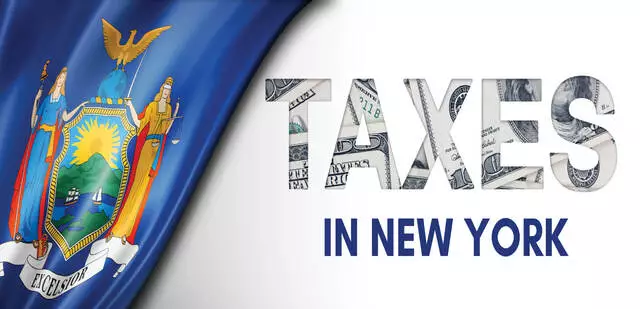
We’ve enjoyed the steady flow of cases from the DTA of late. One of the reasons we write TiNY is that we are interested in how the judges and the Commissioners on the Tribunal view the cases. We have the most fun when we posit alternative views to get our readers to think critically about the cases and not simply accept them because the judges say this is how the law is supposed to work. It is less fun for us when we agree with the Judges since we don’t think we are bringing value to our twelve or so loyal readers to just report the news without providing insightful commentary. “We agree” is not insightful.
The decision and determination this week are not fun (for us, anyway). The order has a little entertainment value.
Decision:
Matter of CPV Staten Island, Inc. et. al. (May 23, 2024); Div’s Rep. Adam Roberts, Esq.; Pet’s Rep. Richard Gabor, Esq.; Articles 28 and 29/Indirect audit methodology (Chris Doyle).
We don’t like audits of most cash businesses (convenience stores, delis, bars) since it is often hard for us to be cost-effective for these types of clients. It isn’t because we lack the necessary legal experience (see, e.g., Matter of Rosemellia (ALJ June 20, 1991) in which yours truly represented a bar/restaurant in a matter involving a sales tax audit). Instead, we find that the business’ records are often a mess, comprehensive receipts for sales are often not available, and the Department’s standards for what constitutes acceptable records is very (some might say “unrealistically”) high. Even with good records, the audits can take forever as the taxpayer’s representatives and then the auditors review the records (which are voluminous) to see if the taxpayer properly reported sales tax. The complexity of the audit is compounded if the taxpayers sell a mix of exempt and non-exempt products requiring proof of whether an exemption applied. And, when I take off my tinfoil hat to allow the conspiracy theories to roam freely, I often wonder if the auditors pick an estimation method that they expect will result in an inflated result.
Give me a meaty income tax apportionment issue for a competently staffed corporate client any day of the week and twice on Sundays, please!
In this case involving audits of two deli/sandwich shops related by common ownership, the auditors resorted to use of a rent factor estimation of sales since Petitioners provided no sales receipts. The auditor found a Restaurant Industry Operations Report (RIOR) that indicated rent for a limited-service restaurant should be about 6.5% of gross sales. The auditor then divided Petitioners’ annual rent expense by .065 to approximate Petitioners’ gross sales, and then the auditors reduced that taxable base by 20%, which was the auditor’s estimate of exempt sales of sliced meats and other nontaxable unprepared foods.
Petitioners argued that the use of the RIOR‘s “limited-service restaurant” category was irrational since the facilities were mostly delicatessens. And they argued that the use of a 20% allowance for non-taxable food sales was also too low. Based on these arguments, Petitioner theorized that the audit lacked a rational basis.
The Tribunal found that the audit had a rational basis and sustained the notice. The Tribunal started with the premise that Petitioners were required to keep sales records. And their failure to produce any records at the hearing was held against Petitioners by both the ALJ and the Tribunal.
For those of you unfamiliar with the rules, let me clarify them for you: In the criminal law universe, the defendant is presumed innocent, and the prosecution must prove guilt beyond a reasonable doubt. In the New York tax universe, the notice issued by the Division is presumed correct and the taxpayer must prove their innocence with clear and convincing evidence. Where the results of an estimated audit are challenged, it is therefore not sufficient to show that the result is wrong (as an estimate, it would be unusual for the result to be correct with exactitude), but the taxpayer must also show what the correct tax should be. There is an exception to this rule if the estimated audit methodology can be shown not to be designed to produce a reasonable estimate of the taxes owed. But this is a very low bar for the Division to satisfy, and the Tribunal found that the Division satisfied it here even though the original auditor did not testify as to the process that resulted in the choice of the rent factor estimation method.
I don’t know if the auditor’s approach resulted in a reasonable approximation of the sales tax owed by Petitioners; maybe it did and maybe it didn’t. The reason I don’t know is because here is the evidence Petitioner offered at the hearing to establish the correct tax owed: (sound of crickets). It’s hard to disagree with the Tribunal when the proof provided by Petitioners is so … limited. In short, we agree (yawn).
Determination:
Matter of Lynch and Wehle (ALJ Russo, May 23, 2024); Div’s Rep. Colleen McMahon, Esq.; Pet’s Rep. Alla Ratynets, CPA; Article 22/Timy (Chris Doyle).
Typical timy, typical result. The Division proved both its standard mailing practices and that they were followed when it mailed the notice to Petitioners’ last known address on March 1, 2022. Petitioners’ BCMS request filed on April 24, 2023, was therefore about nine months too late. Petition dismissed. We agree (ho-hum).
Order:
Matter of Alitalia Società Aerea Italiana S.p.A. (ALJ Chu-Fong, May 23, 2024); Div’s Rep. Mary Humphrey, Esq.; Pet’s Rep. Jolyon Silversmith, Esq.; Articles 28 and 29/Bill of Particulars (Pete Calleri).
Petitioner, an airline, filed a petition with DTA protesting a conciliation order issued by BCMS which sustained three notices of determination. The notices assessed additional sales tax due under Tax Law § 1105(d)(i), which taxes the sale of food and drink based upon payments made by Petitioner to another airline, and vice versa, to enable certain passengers the right to utilize airport lounges at JFK International Airport. Petitioner disagreed, citing the incidental nature of the food and drink available in the airport lounges, application of the federal Anti-Head Tax Act, and double taxation.
The Division served its answer to the petitions, and in typical fashion denied just about everything. Petitioner served a demand for a bill of particulars containing six items, each of which substantively disagreed with the Division’s position and probed its legal posture. Additionally, each item contained the language “identify and provide all documents and information,” and sought production of documents by the Division. The Division made a motion to vacate arguing that Petitioner’s demand sought evidentiary material rather than an amplification of the answer, requested attorney work product, and tried to gain access to factual issues upon which the Petitioner bore the burden of proof.
The Judge agreed with the Division. He held that each item in Petitioner’s demand violated established principles guiding bills of particulars. By seeking “all documents and information,” the demand attempted “to gain disclosure of evidentiary material [which] is improper” (Bassett v. Bando Sangsa Co., 94 AD2d 358, 359 (1st Dept 1983), appeal dismissed 60 NY2d 962 (1983)). Furthermore, each item met the “palpably improper” standard set forth in State of New York v. General Elec. Co., 173 AD2d 939, 941 (3d Dept 1991). Finally, the Judge noted that the Division’s answer only minimally met the standards of 20 NYCRR 3000.4(b). The Judge felt that the Division’s Answer adequately explained the basis for the Notice and that it was obvious from the detailed petition that Petitioner understood the basis for the Notice and simply disagreed.
Therefore, the Judge granted the DTA’s motion to vacate the demand.
But here is something that’s bugging us: The Answer doesn’t cite a single section of the Tax Law that imposes sales tax and explicitly denies everything in the petition. So, even if the petition provided an unabridged roadmap of how the Division got from audit to notice, the Division’s blanket denial puts all the allegations in the petition in doubt. Given the doubt apparently created by the Division’s Answer, I might have given Petitioner the opportunity to probe the Division’s position. And, as it seems like the requested information is relevant, Petitioner can subpoena it and require the production of it at hearing in any case. And this last word: I don’t think the Division’s Answer here satisfies the Regulatory requirement of “fair notice of the matters in controversy and the basis for the parties’ respective positions.”


